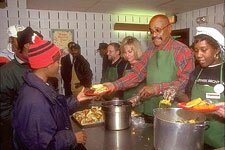
Homeless Shelter Directory
NAEH Wants To Help
Since 2006 I have been working on the Homeless Shelter Directory. During this time I have tried to find good statistics on the number of homeless in the US.
In my research I have found that the National Alliance to End Homeless reported in Jan 2009 that due to the recession, they are estimating that there will be an additional 1.5 million Americans homeless over the next two years. They have their calculation in this report, Homeless Increase.
The National Coalition for the Homeless provides the standards for statistics for the homeless in the US. The breakdown the homeless population as Homeless Families with Children, Homeless Youth, Homeless Veterans and Elderly Homeless. There are many statistics in their reports and if you have time, I recommend you try to give it a good read, National Coalition For The Homeless Statistics.
Statistics as of July 7 , 2014 there are 1,750,000 homeless persons living in America, and many of those are right here in our own community.
Demographic make-up of the homeless population
Single Men 44%
Single Women 13%
Families with Children 36%
Unaccompanied Minors 7%
That is why we are who we are; to help those individuals in need which also helps the entire community as a whole.
Why Are People Homeless?
Housing
A lack of affordable housing and the limited scale of housing assistance programs have contributed to the current housing crisis and to homelessness. Recently, foreclosures have also increased the number of people who experience homelessness.
The National Low Income Housing Coalition estimates that the 2013 Housing Wage is $18.79, exceeding the $14.32 hourly wage earned by the average renter by almost $4.50 an hour, and greatly exceeding wages earned by low income renter households.
Poverty
Homelessness and poverty are inextricably linked. Poor people are frequently unable to pay for housing, food, childcare, health care, and education. Difficult choices must be made when limited resources cover only some of these necessities. Often it is housing, which absorbs a high proportion of income that must be dropped. If you are poor, you are essentially an illness, an accident, or a paycheck away from living on the streets.
- In 2011, the official poverty rate was 15.0%. There were 46.2 million people in poverty.






 Copyright © 2023 graysoncountyshelter.com. All Rights Reserved
Copyright © 2023 graysoncountyshelter.com. All Rights Reserved